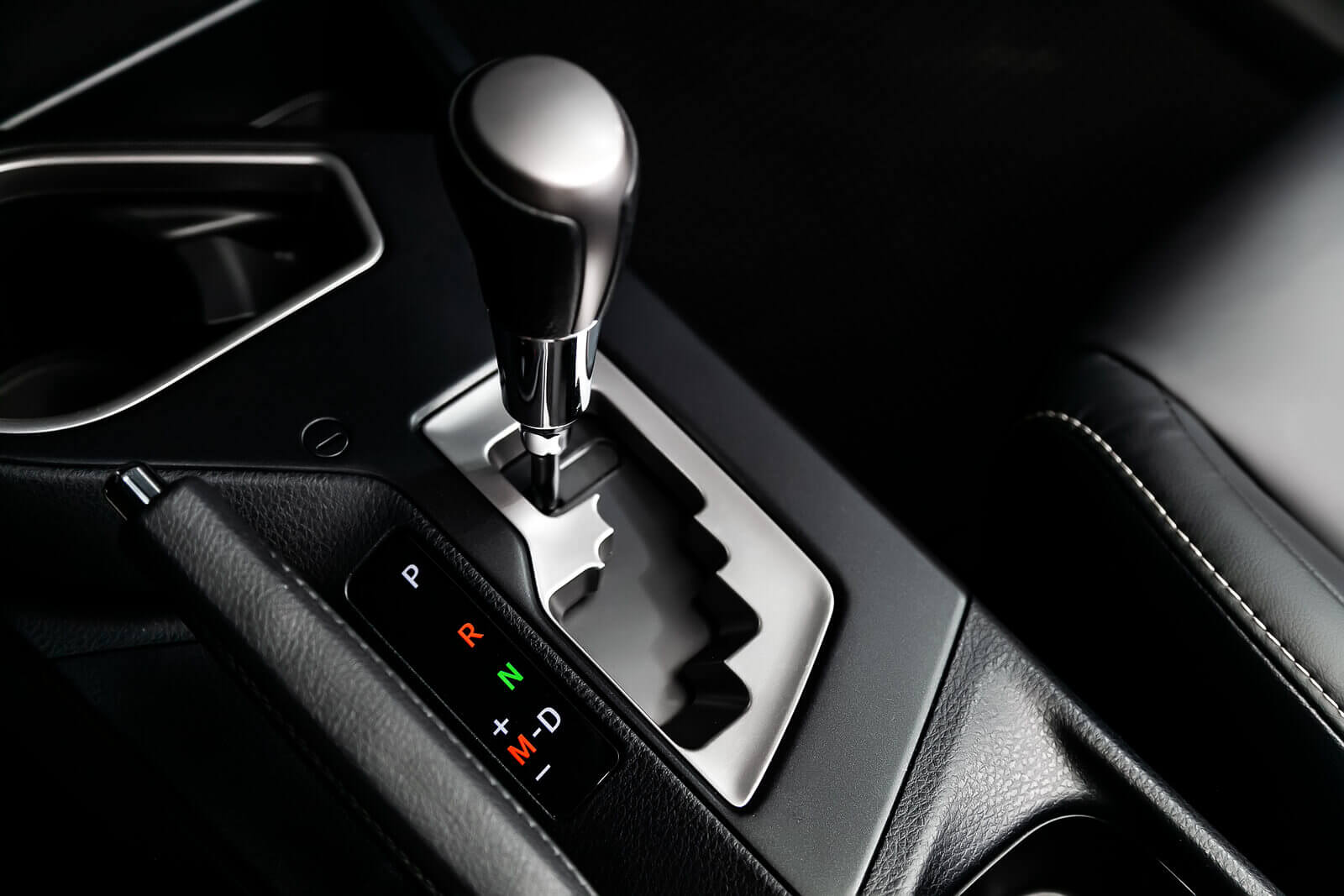Semi-automatic cars are easy to drive, and give you manual control when you need it most.
If you have just bought your first semi-automatic, it is important that you understand what a semi-automatic is and how it differs from other vehicles.
Read on and find out what a semi automatic car is, how they differ from automatic vehicles, and how to drive one.
Page Contents
- What Is a Semi-Automatic Car?
- How Does a Semi-Automatic Car Work?
- How to Drive a Semi-Automatic Car
- What Do the Letters on a Semi-Automatic Gearstick Mean?
- What's the Difference Between an Automatic and a Semi-Automatic Car?
- Should I Buy a Semi-Automatic Car?
- Which Cars Are Semi-Automatic?
- What Are the Most Common Problems with Semi-Automatic Cars?
- FAQs
What Is a Semi-Automatic Car?
A semi-automatic gearbox combines elements of both a manual and an automatic gearbox.
Like an automatic car, most semi-automatic cars are not fitted with a clutch pedal as the clutch is remotely controlled.
In a semi-automatic car, you will have the option to switch between manual and automatic controls easily.
You can drive a semi-automatic like a fully automatic car – with no need for manual gear changes – but you can also take manual control.
How Does a Semi-Automatic Car Work?
Semi-automatic transmissions are manual transmissions, without the clutch pedal.
In manual transmissions, the driver can directly control the clutch, whilst in a semi-automatic car an electronic system handles clutch operations for manual-like gear changes.
This makes them easy to drive and means that you can choose how to control the gears as there is a selection of manual and automatic options.
Unlike traditional automatic transmissions - which use torque converters or fluid coupling to transmit power from the engine to the gearbox - semi-automatic gearboxes often use a clutch mechanism like that found in manual transmissions.
Instead of cables and pipes running from the transmission to the driver to affect gear changes, actuators and computers do this for you in a semi-automatic car.
You can push a lever on the gearstick to change gears or use steering wheel paddles which allow you to go up or down by pressing the ‘+’ or ‘-’ buttons.
The engine produces kinetic energy which helps to rotate the wheels.
Carefully tuned gear ratios control how fast or slow the wheels spin.
The automatic clutch connects to a hydraulic motor – a replacement for a clutch pedal – and changes gear for you when in automatic mode.
If you take manual control, the computer will tell you when to shift up or down via the corresponding paddle.
The computer always controls the clutch function, meaning you don’t have to worry about syncing it all up.
Some semi-automatic cars use a hydrualic motor for the clutch, whilst others use electric motors or electro-mechanical systems.
How to Drive a Semi-Automatic Car
Take a look at this video, which teaches you how to drive a semi-automatic car.
What Do the Letters on a Semi-Automatic Gearstick Mean?
Unlike an automatic gearbox which has four settings (Park, Drive, Reverse and Neutral), a semi-automatic transmission is likely to show the letters P, R, N, D & M or A, N, R & M.
P = Park
Acting as a handbrake, park locks the transmission and stops the car from moving. You should engage park mode whenever you get out of the car.
R = Reverse
If you want the car to go backwards, you should select reverse. You should not put the car into reverse for any other reason.
N = Neutral
Neutral is the mode you should use to stop the car for a short period of time, for instance whilst waiting at traffic lights.
If your semi-automatic car has a handbrake, you should engage this at the same time. Even if you have selected neutral, the car will still creep forward if you take your foot off the brake. You should not engage neutral for any other reason.
M = Manual
Selecting manual puts you in charge of changing gear. The car will only automate the clutch in this mode.
Most semi-automatic cars have plus and minus m buttons.
M+ allows you to upshift, whilst m- lets you downshift.
D = Drive
Drive keeps the car moving forward. You should put your car in drive when you want to move – otherwise the computer can’t change gears for you.
A = Automatic
Automatic works exactly the same as drive (D), with drive being more common than automatic on gearsticks of semi-automatic vehicles.

What's the Difference Between an Automatic and a Semi-Automatic Car?
As a semi-automatic car gives you the option of changing gears manually, this can give you extra control and a smoother drive.
In an automatic, the car will change gears for you.
Semi-automatic cars can be more fuel-efficient that fully automatic vehicles, depending on the type of semi-automatic transmission.
You can even drive a semi-automatic car on an automatic licence – provided that the vehicle does not come with a clutch pedal.
Many modern cars use electronic automatic gearboxes to change gear when the computer recognises that you need it most.
The ease of slipping the car into drive and not having to worry about it appeals to many people.
However, a common criticism of older or less advanced automatic transmissions is that gear changes can be jerky or ineffective.
The computer has set gear ratios and knows exactly when to shift up or down – but it doesn’t factor in the road situation when it does so.
If you own a semi-automatic car, you have the option to shift it into manual, making driving at low-speed or low revs easier.
Many high-end sports cars and supercars are semi-automatic, benefiting the driver in terms of extra control and precision.
When you combine this control and enjoyment with potential fuel savings, it is easy to see why so many drivers have ditched the manual gearbox.
In essence, a semi-automatic car gives you more flexibility than an automatic car, while keeping the same ease and convenience that draws drivers towards computer-controlled transmission.
Should I Buy a Semi-Automatic Car?
If you’re looking for a vehicle with the ease and convenience of an automatic and the control and smoothness of a manual, then a semi-automatic car could be perfect for you.
Not to mention that a semi-automatic gearbox can give you more control whilst driving in snow and ice, or whilst driving uphill.
Which Cars Are Semi-Automatic?
Most manufacturers have produced semi-automatic transmission cars, though semi-automatic transmissions are more common in luxury and high-performance vehicles.
Saloons
- VW Passat
- Mercedes Benz E-Class
- Volvo S90
- BMW 3-Series
- Alfa Romeo Giulia
Hatchbacks
- Ford Fiesta
- Peugeot 208
- Vauxhall Astra
- Hyundai i10
- Fiat 500
4X4’s
- Hyundai Tucson
- Ford Kuga
- Volvo XC60
- Skoda Karoq
- Mitsubishi Outlander
Estates
- Peugeot 2008 SUV
- BMW X1
- Peugeot 3008 SUV
- Audi A6
- SEAT Leon Sport Tourer
What Are the Most Common Problems with Semi-Automatic Cars?
Some of the most common problems with semi-automatic cars include:
- Grinding or shaking sensation in gear
- Car won’t engage or respond when in gear
- Transmission is noisy
- Burning smell
- Slipping gears
- Low or leaking transmission fluid
If your car begins to change gear less smoothly, becomes less responsive, or starts making a whining noise, then you should have it looked at by a professional mechanic.
Transmission fluid is bright red when clean and dark red when dirty.
If you notice a puddle of this under your car, then there is an issue which needs to be resolved – driving with an unlubricated transmission can lead to costly repairs.
Continuing to drive with damaged gears can make the problem worse and the repair bill more expensive.
The issue could be something as easy-to-fix as a transmission fluid top-up, but it could be far more serious.
A burning smell should never be ignored, as it can indicate that the fluid has overheated, and your vehicle is now unsafe to drive.
If you notice a burning smell, make sure that you stop driving as soon as possible and call your recovery provider to take your car safely to a garage.
You should be cautious if you smell burning, but should not assume that a transmission problem is the exact cause, as this can be a sign of an issue with the brakes or engine oil.
If you are experiencing problems with your semi-automatic car, you should trust a mechanic to find the exact cause and provide an effective solution for you.
FAQs
Can You Stall a Semi-Automatic Car?
Can You Drive a Semi-Automatic Car on an Automatic Licence?
.png&w=3840&q=75)






